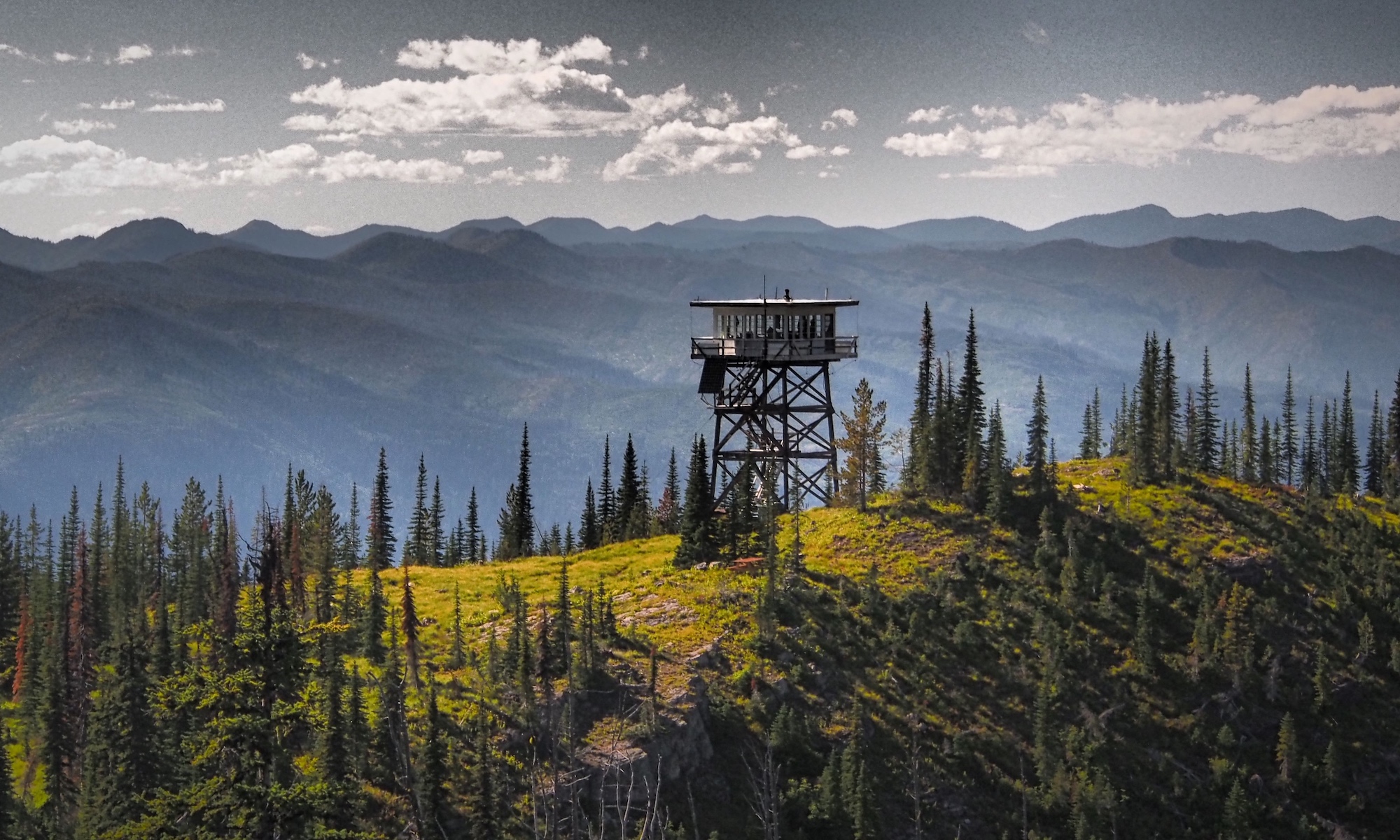What counts as a Lookout? What counts as a Standing Lookout? Ten people will most likely have ten different answers for these questions!
For consistency here, and to keep things relatively simple, these lists will have Lookouts categorized as:
1) Sites or structures known or believed to have been built and/or used for a primary purpose of wildland (forest) fire detection by an agency or organization. These have further been broken down into:
a) Lookouts – Generally permanent enclosed structures that were constructed for the primary wildland fire detection purpose, from which observers “looked out” for fires, but not including related structures such as separate living quarters.
b) Sites known or believed to have been used in a primary fire detection role that did not have a permanent lookout structure, including crowsnests, platforms, firefinder stands, open summits, camps, etc.
2) Other structures or sites from which fires may have been detected/reported, but incidental or secondary to that site’s intended purpose such as city/town (structure fire) lookouts, some of the WWII AWS stations, etc. These may be recognized, but will not be included in counts.
3) Replica or Relocated Lookouts (relocated for purposes other than agency fire detection). Known ones may be recognized, but they also will not be included in counts. There are many other privately owned relocated lookouts for which little is known.
There will always be gray areas, exceptions, questions, and different opinions due to the lack of documentation or evidence for many sites. For example, there are questions whether several towers on wildlife refuges were for fire detection or wildlife observation, but with lack of definitive proof, have been included, since US Fish & Wildlife Service is one of the recognized federal wildland fire agencies.
Standing Lookouts here will include towers that retain their structure and support, even if the cab is no longer in place (denoted as “Standing*”). Ground house lookouts will be considered as standing as long as the walls and/or roof are still in place. This designation will generally apply only to those in the Lookouts (1a) category above. Crowsnests, tree lookouts, and platforms are generally not included here. Other projects may very well have different criteria – for example, National Historic Lookout Register criteria for listing has varied from very restrictive to currently being much more relaxed than that used here.
Current or most recent lookouts will be referenced in the lists; information on previous lookouts at a site will be included on the page for that site.
These lists will always be “works in progress” as conditions change and evidence or documentation is found, and as definitions are refined.
Lookouts in other parts of the world (no plans for any detailed lists)

